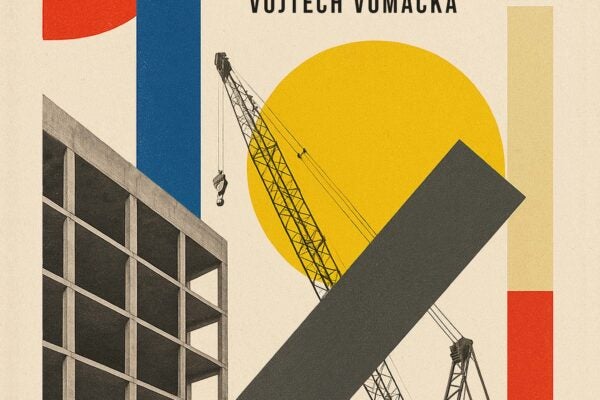
Wood Engraving. Between 1800 and 1899. Wellcome Collection.
I started my career as an instructor at a small college in California, in the field of psychology. Keep in mind, this was before the era of online databases, and the easy access to content we have today.
While introducing a topic on how specific ethnic groups in Los Angeles were being depicted for a crime reported in the Los Angeles Times, I noticed a completely different side of the story from a local newspaper that was not easily available to my students. Introducing this to my class and viewing another side of the story outside the Los Angeles Times created a learning experience for the group that I will never forget. It changed the direction of my career, to help ensure more content was made available to more researchers around the world, to broaden how they think and learn.
During the early months of COVID, there was a large move to make all electronic content available at no cost for a limited time. The publisher community worked to help support the research needs of learners, and understood that access to the material in the library was off limits. Our team learned that when we made more ebooks freely available, they were used, and used a lot. This led a director at an academic press to say, “It is not that there is a lack of demand for scholarly ebooks, the usage during COVID proved that. What is broken is the system to get the ebooks to the users.”
JSTOR began working with publishers to develop a program called Path to Open, which helps increase the number of open access ebooks published. Path to Open was designed to fund 300 new titles each year, each with a pathway to being open access that did not exist before. This is made possible through strong library support for the program.
Having seen the success of building this type of program with a community of nonprofit organizations, libraries approached me last year to ask what more JSTOR could do to support them, and publishers, in ebook publishing. Specifically, they wanted to see a nonprofit organization provide an option for libraries to support their university presses that did not require a dependency on a commercial organization.
A growing frustration in the community
There is also a growing frustration with publishers, highlighted by a conversation with a university press director who echoed, “We publish books that could change the conversation, but too often they never reach the readers who need them most.” A librarian in the Midwest recently told me, “Every year, I spend more time deciding which books not to buy than which ones to purchase.”
It wasn’t because the books weren’t valuable—they were. Even with the best intentions, she was forced to leave gaps in her collection.
For small and mid-sized university presses, those gaps matter. Fewer purchases mean less revenue. Less revenue makes it harder to keep publishing new scholarship, especially open access (OA) books, which bring in no sales, but cost real money to produce.
And for researchers, it means hitting a paywall, waiting for an interlibrary loan, or never finding the book at all.
It’s clear the problem isn’t a lack of demand or interest in ebooks—it’s the system by which they are sold and accessed. Libraries face flat or declining budgets, and high ebook prices make it difficult to acquire a growing list of publisher titles, especially the larger list of available backlist books. The average price paid per title on JSTOR has doubled over the last 5 years. We’ve seen the average list price of an unlimited-user ebook double over the last five years. The cost of a single title is the same for a well-funded research institution as it is for a community college, or for an institution in another part of the world with far fewer funding resources available.
Shaping a new model with our community
Having been approached by libraries about the challenges, I felt it was important to conduct more interviews with both libraries and publishers to understand what was missing from programs and partners currently supporting presses and their collections.
After writing a business model draft, I recruited a dedicated group of people that included those from the Big Ten Academic Alliance, New York University, Rutgers University, University of Basel, University of North Carolina Press, Liverpool University Press, Syracuse University Press, University of Wisconsin Press, Berghahn Books, and others, and we spent months working through the business model to ensure we were documenting the issues the community was facing, and how a new model and partnership with JSTOR could help provide solutions.
To help validate whether we were addressing their issues, we held meetings with over 60 publishers to discuss the model, gather additional insights into pricing, access, and sustainability, and determine if this was something we should continue to push forward with.
“When JSTOR approached us with an offer to participate in their new Publisher Collections program, we saw it as an opportunity to offer libraries more choices. We were impressed with the care, collaboration, and commitment they brought to construct a solution that benefits both publishers and libraries.”
—Marlene McHugh Pratt, director, SUNY Press
On the library side, we connected with 175 librarians through surveys and in-depth interviews, hearing from professionals in e-resources, acquisitions, collection development, and leadership. Their feedback was clear: they valued a lower average cost per title, perpetual access to current-year titles, seamless access to earlier titles during participation, and long-term preservation. In fact, 74% stated they were likely or very likely to participate, agreeing that Publisher Collections addresses today’s top challenges—flat budgets, platform sprawl, and the need for perpetual access.
“The most compelling part of Publisher Collections is that it directly addresses the challenges libraries are facing.”
–Lynn Klundt, reference and instruction librarian, electronic resources manager, Northern State University
This collaborative approach ensured the model was built not only for the community, but with it.
Publisher Collections on JSTOR brings a new way forward
Here’s how:
- Comprehensive coverage: Participating publishers offer their current-publication-year scholarly ebooks in one annual collection, with a perpetual access license.
- Full-run access: Libraries that participate get not just the newest titles, but access to all of the publishers’ earlier titles on JSTOR for as long as they participate.
- Budget predictability: Publishers’ annual participation fees are tiered by institution size and country, making planning easier, and pricing more affordable for smaller institutions. Fee increases are also capped to align with library budget realities.
- One familiar platform: Ebooks live alongside journals, research reports, primary sources, images, and multimedia on JSTOR to improve discoverability and usability.
Why it matters:
- For libraries, this model means reduced patchwork ebook buying, less choosing between supporting publishers and worrying about budgets, and less time tracking what’s OA and what’s licensed. Whether a community college or an Ivy League university, every library gains equitable access to the same comprehensive collection.
- For publishers—especially small and medium-sized university presses—it means a sustainable revenue stream that supports both licensed and OA publishing. It helps them reach more than 14,000 institutions that participate in JSTOR around the world.
- And for researchers, it means better, faster, and more comprehensive access to the scholarship they need, whether they’re on campus in the U.S., studying remotely in Australia, or at a small university in Ghana.
How is open access supported?
Since first making OA ebooks available on JSTOR in 2016, we have grown this corpus to over 13,000 open access ebooks from over 145 publishers. Open access ebooks are treated the same as licensed titles on JSTOR. They have the same metadata to enhance discovery, are preserved through Portico, include MARC records, and are accessible through all major discovery services like EBSCO EDS. These titles offer strong value to researchers around the world, as evidenced by the 19.6 million uses from January 2024 through July 2025.
The publishers participating in Publisher Collections have shown a longstanding commitment to OA publishing. There are over 1,600 of their titles on JSTOR. In 2024, they published over 1,400 new titles and more than 215, or 15%, were published as immediate OA, or delayed OA through Path to Open. Publishers in the program are committed to continuing to increase the number of open access ebooks they publish, as resources allow.
The 1,600 OA titles have also had a strong impact on expanding knowledge to users around the world. There were over 2 million uses from January 2024 through July 2025 alone. Usage was not just across large institutions in North America or Western Europe—there were over 12,200 institutions across 228 countries that used these books during that time period. What’s even more impressive is that there were over 925,000 unique researchers who used these books during this time.
This data provides strong evidence that supporting these publishers and their open access titles helps to make a difference in learning by expanding access to more users around the world.
Join us in shaping the future of scholarly publishing
Publisher Collections is a step toward a more sustainable, equitable, and integrated scholarly publishing ecosystem where libraries can stretch their budgets further, publishers can thrive, and readers can access more knowledge than ever before.
Beginning in 2026, the first Publisher Collections will launch with a growing list of 22 participating presses, marking one of the first nonprofit-led publisher collection models.
- Berghahn Books
- Cornell University Press
- Duke University Press
- Fordham University Press
- Indiana University Press
- Leuven University Press
- Liverpool University Press
- NYU Press
- Pluto Books
- SUNY Press
- Syracuse University Press
- University of Arizona Press
- University of Illinois Press
- University of Nebraska Press
- University of North Carolina Press
- University of South Carolina Press
- University of Utah Press
- University of Wisconsin Press
- University Press of Florida
- University Press of Kansas
- University Press of Kentucky
- University Press of Mississippi
See how Publisher Collections can be a valuable addition to your institution. Let us know your interest in participating, and a JSTOR representative will be in touch with you.



